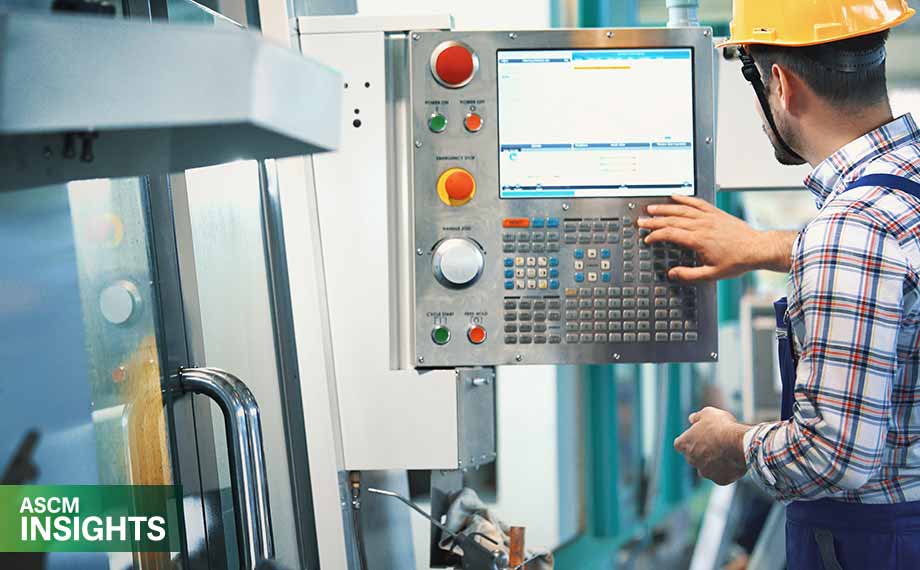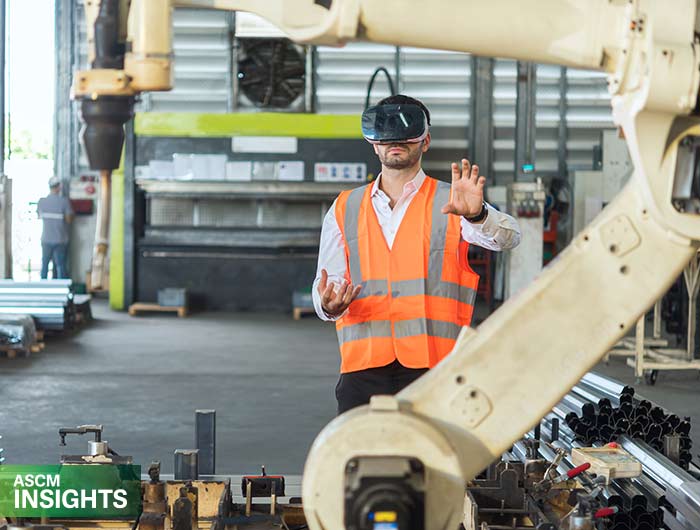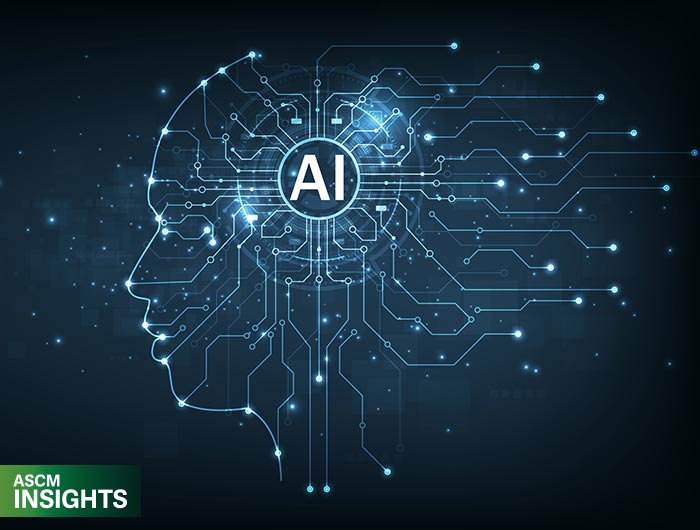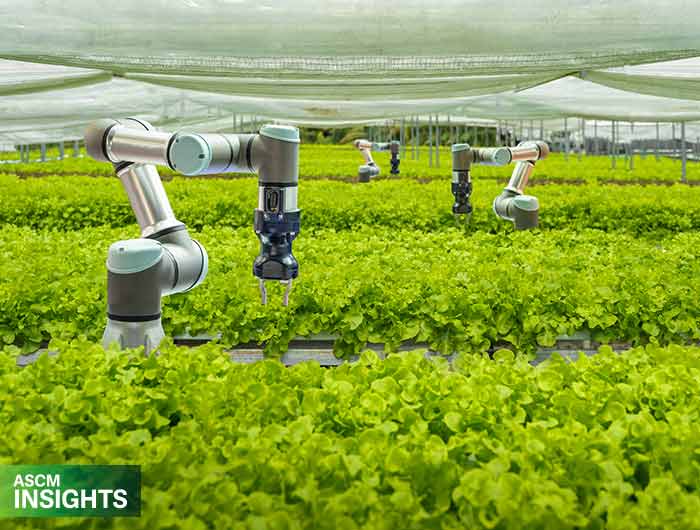Editor’s note: AI is revolutionizing the way computer numerical control (CNC) machines are being programmed by manufacturers today. By providing informed recommendations, AI assists less experienced users in making better decisions and reduces the risk of errors. This automated guidance also streamlines the setup process and enhances the accuracy of machining operations. For manufacturers, this translates to improved efficiency, reduced programming time and more consistent part quality. I recently had the pleasure of speaking with DELMIA’s George Chen. We delved into the exciting world of AI and its transformative potential for machining operations.
Rennie: Tell me about the current impact of AI programming on automation, fabrication and manufacturing. Specifically, how can CNC machines be automated to improve performance and efficiency?
Chen: In the realm of automation, fabrication and manufacturing, integrating AI with CNC machining operations is rapidly transforming the industry. As companies seek to enhance precision, increase efficiency and reduce costs, AI-driven CNC machining is emerging as a game-changing innovation.
To start with the basics, CNC machines are automated systems that use computer programming to control the movement and operation of machinery tools such as lathes, mills and grinders. This automation allows for high precision and repeatability in manufacturing processes.
As AI becomes increasingly integrated into CNC machines, algorithms can optimize cutting paths, predict maintenance needs and make real-time adjustments during operations. This results in reduced waste, faster production times and lower operational costs.
Machine learning (ML), as a subset of AI, is also used in CNC machining to improve accuracy. By analyzing historical data and current conditions, ML models can predict tool wear and optimize machining parameters. This predictive capability extends the life of cutting tools and minimizes downtime. For example, AI can analyze large datasets from previous machining operations to identify patterns and optimize future processes. This leads to more efficient production schedules and improved overall productivity.
Rennie: CNC machining has long been integral to the manufacturing process and is known for its precision and repeatability. What new capabilities, that extend beyond traditional limits, is AI now offering?
Chen: There are several. First, AI enhances CNC machining precision by leveraging real-time data analytics. AI-powered quality control systems can reduce defect rates and algorithms analyze data from sensors embedded in CNC machines to detect deviations and anomalies that human operators might miss. This ensures higher consistency and quality in the final product, translating to fewer rework cycles and higher customer satisfaction.
The adoption of AI for predictive maintenance is also revolutionizing how manufacturers approach equipment upkeep. Predictive maintenance powered by AI can decrease maintenance costs and reduce unplanned downtime. By analyzing historical performance data and real-time sensor inputs, AI can forecast potential machine failures before they occur, enabling proactive maintenance that prevents costly disruptions.
In addition, AI’s role in optimizing production scheduling is crucial for maximizing efficiency. AI-driven scheduling systems can improve production efficiency and algorithms can automatically generate and optimize toolpaths, manage machine availability and reduce lead times, leading to more streamlined operations and enhanced throughput.
The automation of complex machining processes through AI significantly boosts productivity. AI systems in CNC machining can automate setup procedures, tool changes and even adapt to new designs with minimal human intervention. This results in faster production cycles and a notable reduction in human error.
Lastly, the ability to quickly adapt to varying production needs is becoming increasingly important. AI enhances CNC machining’s flexibility by enabling rapid adjustments to production parameters. There is significantly less time spent reconfiguring machinery for different products and the key roles AI-driven systems play in this endeavor. This agility supports manufacturers in meeting the growing demand for customized and small-batch production runs without compromising efficiency.
Rennie: Please describe exactly how can AI be used to program a CNC machine. What do professionals need to know?
Chen: Leveraging advanced algorithms to automate and optimize various aspects of the programming process includes generating G-code and M-code, which are essential for controlling CNC machines. AI systems analyze 3D models, material properties and historical data to create efficient tool paths. Several key steps are involved: First, AI evaluates CAD models to understand the geometry and features of the part to be machined. Also, the system simulates different tool paths to identify the most efficient route, reducing material waste and machining time. And AI adjusts machining parameters such as feed rates and spindle speeds based on material and machine capabilities. For example, if a part requires complex contours, AI can determine the best cutting strategy to achieve precise dimensions. This reduces the need for manual programming and minimizes errors, making the process more efficient and reliable.
Rennie: Can you share some real cases with our readers to help them understand successful applications and approaches?
Chen: Several leading companies are already reaping the benefits of AI-powered CNC machining. One well-known utility has adopted AI to boost predictive maintenance and process optimization in its CNC machining operations. Using AI to analyze machine data and forecast potential failures, they achieved a 20% increase in equipment uptime and a 15% reduction in maintenance costs. This approach enhances productivity and lowers operational expenses by minimizing unexpected breakdowns and optimizing maintenance schedules. The business has also been successful in integrating AI to improve manufacturing efficiency and reduce costs.
In another example, an engineering and technology company integrated AI into its CNC machining. Doing that, they have revolutionized its quality control, achieving a 40% reduction in defect rates. AI-driven real-time quality monitoring systems continuously analyze production data and sensor inputs to detect and correct deviations promptly. This proactive approach identifies potential issues before they impact the final product and enhances overall product quality. This technology underscores their dedication to advancing manufacturing excellence and customer satisfaction through innovative AI applications.
Rennie: What’s the most important thing for supply chain professionals to keep in mind when starting out with AI for machining?
Chen: As a supply chain professional, understanding how AI can optimize and streamline manufacturing processes is crucial. By automating tasks, reducing costs and improving quality, AI empowers companies to achieve operational excellence and meet the ever-evolving demands of today's competitive market. The constructive interaction between AI and CNC machining is set to reshape the future of manufacturing. Embracing these innovations will empower industries to achieve new levels of excellence, driving growth and success in an increasingly complex market.
Manufacturers seeking a competitive edge can get ahead of the curve by downloading our Top 10 Trends of 2025. Learn why AI is a game-changer for warehousing and logistics along with other major trends shaping supply chain today.



